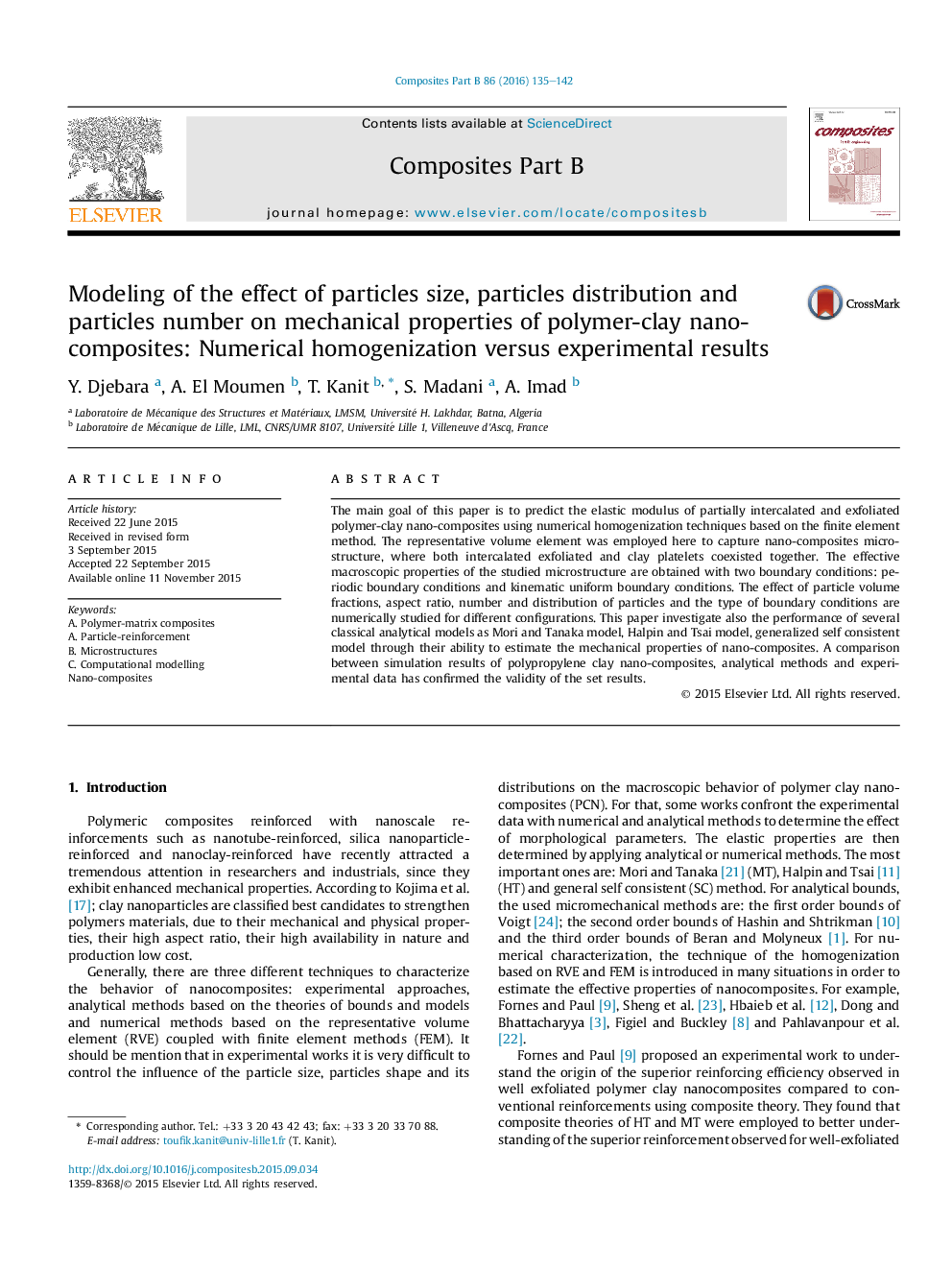| Article ID | Journal | Published Year | Pages | File Type |
|---|---|---|---|---|
| 817039 | Composites Part B: Engineering | 2016 | 8 Pages |
The main goal of this paper is to predict the elastic modulus of partially intercalated and exfoliated polymer-clay nano-composites using numerical homogenization techniques based on the finite element method. The representative volume element was employed here to capture nano-composites microstructure, where both intercalated exfoliated and clay platelets coexisted together. The effective macroscopic properties of the studied microstructure are obtained with two boundary conditions: periodic boundary conditions and kinematic uniform boundary conditions. The effect of particle volume fractions, aspect ratio, number and distribution of particles and the type of boundary conditions are numerically studied for different configurations. This paper investigate also the performance of several classical analytical models as Mori and Tanaka model, Halpin and Tsai model, generalized self consistent model through their ability to estimate the mechanical properties of nano-composites. A comparison between simulation results of polypropylene clay nano-composites, analytical methods and experimental data has confirmed the validity of the set results.
